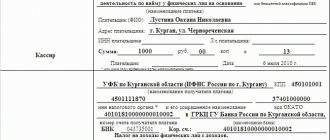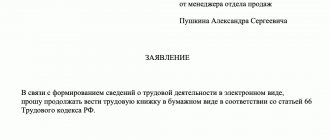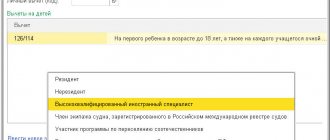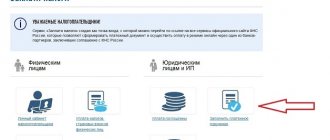Mineral extraction tax – 2021
All rates for calculating the mineral extraction tax in 2021, which is a federal-level tax, are reflected in the Tax Code of the Russian Federation (Article 342). They are divided into 2 types:
- expressed as a percentage;
- set in rubles.
Many of them provide for the use of coefficients that take into account:
- fluctuations in consumer prices;
- extraction method;
- characteristics of the territory of the developed field;
- fluctuations in world prices;
- mining difficulty level;
- degree of depletion of the deposit.
The tax base, or the number of minerals, is measured only in physical terms, and is calculated by two methods - direct and indirect. After choosing a method for determining the amount of extracted raw materials, it is fixed in the accounting policy. Taking into account these data, a declaration is filled out. Each option is used under individual circumstances.
Thus, the average price level for Urals oil on the Mediterranean and Rotterdam crude oil markets is $78.13 per barrel; The average exchange rate of the US dollar to the Russian ruble, established by the Bank of Russia, for all days of the tax period is 67.6597. Accordingly, the value of the Kc coefficient is 16.3654. The calculation is carried out on the basis of accounting and tax accounting, as when calculating income tax. In this situation, when the organization does not sell anything, but uses the extracted resources for further processing, the tax base for calculating the mineral extraction tax should be determined based on the calculation of the cost of the extracted mineral resources within the framework of accounting and tax accounting. Question No. 2.
Calculations must be made monthly; the data is shown separately for tax periods without accumulation. Calculation of the mineral extraction tax on oil - example based on the rate in force in 2021. It is equal to 919 rubles. for every ton of raw materials. Calculating the coefficients is the most difficult part of the job.
The tax amount in the declaration is indicated only for the reporting month, that is, the amount is not calculated on an accrual basis.
The 2021 mineral extraction tax is calculated based on the specific type of each natural resource, as well as taking into account the specifics of calculating the tax base and established rates for minerals. What sources of law can be used in this case and what is the algorithm for determining the amount of mineral extraction tax that is subject to payment to the budget?
An example of calculating the mineral extraction tax for an oil producing company Initial data: in February 2021, it produced 10 thousand tons of oil.
More than 50 regions collect taxes to the Russian budget less than Dagestan alone receives from it
At the beginning of 2021, it became known that the conditions for subsidies to the regions would be tightened. For subsidies to equalize budgetary security in 2018-2020. will account for more than 40% of the transfer from the federal budget (about 2 trillion rubles). Thirteen regions will receive half of the assistance, with Dagestan receiving the most. It remains the most subsidized region, and will receive 66.2 billion rubles from the federal budget this year.
Let us note that 57 regions of Russia collect less taxes to the federal budget than Dagestan alone will receive. For comparison, the latter collected 14% more last year, but only 9.2 billion rubles. That is, the volume of Moscow transfer to Dagestan is 7.2 times higher than its own federal taxes. If we talk about all taxes and fees, then Dagestan collected 32 billion rubles last year, of which 22.7 billion rubles remained in the republic, that is, 70%, while in Tatarstan this proportion is the opposite). Thus, the volume of federal assistance is twice as much as everything that Dagestan can collect.
Mineral extraction tax: data for tax calculation for January 2018 published
Some of the applied coefficients are relevant only to a certain type of fossil, others are valid for several types, and a number of coefficients for some of the fossils are applied in combination. The latter type of minerals includes oil and gas, which makes calculating taxes on them quite complex.
The main sources of norms, the provisions of which can be used to calculate the mineral extraction tax, are:
- Chapter 26 of the Tax Code of the Russian Federation;
- various by-laws and departmental acts explaining the provisions of the Tax Code of the Russian Federation (for example, letter of the Federal Tax Service of Russia dated March 17, 2017 No. SD-4-3/, which indicates one of the coefficients for calculating the mineral extraction tax on oil for February 2021).
But in the future, the AIT should be the first step towards a thorough reform of the taxation system and making it more economically sound and flexible.
So, the main object of taxation within the framework of the mineral extraction tax is the extracted mineral in accordance with the classification defined in Art. 337 Tax Code of the Russian Federation. It can be extracted from the bowels of the earth both on the territory of the Russian Federation and abroad (subparagraph 1, 3, paragraph 1, article 336 of the Tax Code of the Russian Federation).
Tax Code of the Russian Federation The value of the indicator (Tr) from January 1, 2021 is taken equal to 0 (zero). The value of the indicator (Tr) from January 1, 2021 is taken equal to 0 (zero).
Kazakhstan is more loyal to the extraction of natural resources in its republic than the Russian government.
Now oil workers pay a mineral extraction tax (MET) to the state treasury, which in no way encourages the development of new fields and leads to the rapid decline of existing ones.
A new term was added to the formula for determining the coefficient Dm - Kk, which reduces the total value of the indicator. For 2021 it is 306 rubles.
The government has been talking about reforming taxation in the field of oil production for a long time, calling the existing system ineffective and outdated.
The oil production industry for the Russian Federation is one of the most significant and largest in the country. The lion's share of tax revenues comes from oil and gas production. For the purposes of taxation of the oil industry, a number of special mechanisms have been created, one of which is the mineral extraction tax.
We invite you to read the article on the topic: “How to calculate mineral extraction tax” with comments from professionals. You can ask our duty consultant all questions on the topic.
Mineral extraction tax is a federal-level tax. The Tax Code of the Russian Federation has established that the tax base for the subsoil use tax is the quantitative ratio of minerals. These include oil, natural and associated gas, coal and gas condensate, and other minerals are determined only by the cost of the resource.
When calculating the mineral extraction tax on oil in 2021, the following special (related only to this fossil) indicators are used:
- taking into account fluctuations in world prices and determined monthly by the Government of the Russian Federation or by independent calculation (clause 3 of Article 342 of the Tax Code of the Russian Federation);
- characterizing the degree of complexity of production and taking on a certain value depending on the specific characteristics of the deposit and the year of development (clauses 1, 2 of Article 342.2 of the Tax Code of the Russian Federation);
- reflecting the degree of depletion of the field; depending on the value of the previous coefficient, it can take either a specific value or become a calculated one (clauses 3, 6 of Article 342.2 of the Tax Code of the Russian Federation);
- characterizing the characteristics of oil production and calculated using a formula that includes several coefficients, both calculated and taking a certain digital value depending on the year of application (Article 342.5 of the Tax Code of the Russian Federation).
The auction was declared invalid by the court. And since the auction did not take place, then there was no violation in the form of a forged bank guarantee!
Mined minerals can be divided into the following groups:
- flammable substances (coal, peat, shale);
- hydrocarbon products, which include oil and produced gas with methane;
- ore;
- various types of non-metallic raw materials extracted by mining and mining chemical enterprises;
- Mineral extraction tax is also charged on rare metals;
- colored stones;
- quartz raw materials;
- precious and semi-precious metals, stones;
- salt;
- water for medicinal purposes and industrial, extracted from underground or natural, thermal springs.
Mineral extraction tax - benefits and tax deductions
The zero rate benefit was discussed in the previous section. It is used for a specific list of PI types, taking into account their characteristics or production region.
Payers can also apply tax deductions:
- On labor protection costs in coal mining.
- When extracting oil and gas in certain territories - Bashkortostan, Khanty-Mansiysk District, Black Sea.
- When producing gas condensate, if its processing results in a wide fraction of light hydrocarbons.
Mineral extraction tax in 2021
In paragraph 1 of Art. 342 of the Tax Code of the Russian Federation provides a list of minerals with a zero tax rate provided for them. Liabilities are calculated for each tax period - it is equal to a calendar month. The tax payment deadline means the period before the expiration of which the required amount of tax must be paid into the budget. For minerals, the following deadline applies: the next 25th day after the end of the tax period.
In general, the taxpayer calculates such coefficients independently. But sometimes they are indicated in departmental acts that supplement the provisions of the Tax Code of the Russian Federation - these include the above-mentioned letter of the Federal Tax Service No. SD-4-3/, which defines the Kc coefficient, reflecting the dynamics of exchange prices for black gold.
Cannot be considered as objects subject to the tax in question (clause 2 of Article 336 of the Tax Code of the Russian Federation):
- publicly available minerals and groundwater that are extracted by individual entrepreneurs are not registered on the state balance sheet and are subject to use for the personal purposes of the entrepreneur;
- minerals and fossils collected for scientific and collection purposes;
- minerals extracted during the use, reconstruction or repair of geological objects classified as specially protected and of social importance;
- minerals obtained from dumps or waste from the taxpayer’s own production - if the corresponding raw materials were taxed at the time of extraction;
- drainage waters flowing underground that are not registered on the state balance sheet of reserves of those minerals that are extracted during the development of deposits or the construction and operation of underground structures;
- methane in coal fields.
But for two more regions of the Volga Federal District - those that received new governors - the volume of subsidies was increased by 15%
At the same time, subsidies to 15 regions increased almost exactly 15%, including two regions of the Volga Federal District: the Kirov region (subsidies increased from 10 to 11.5 billion rubles) and Mari El (by almost 1 billion rubles: from 6 to 6.9 billion ). Note that in these regions the dependence is quite high. Last year, the Kirov region collected 38.2 billion rubles in taxes, retaining 25 billion rubles, and received subsidies amounting to 26% of all collections. Mari El collected 19.3 billion rubles (keeping 12 billion rubles for itself), and received subsidies amounting to 31.17% of all fees. Apparently, in their case, the new government played a role - both in Mari El and in the Kirov region, new governors took office not so long ago and did not yet have time to break the woods (that is, collect loans) to spoil relations with the Ministry of Finance of the Russian Federation.
There were no changes in the list of the most subsidized regions. After Dagestan comes Yakutia, it will receive 47 billion rubles this year (6.7% more), then Kamchatka (its subsidies were cut by 5% - will receive 37.4 billion rubles), Chechnya (will receive 12.4% more - 30.4 billion rubles) and the Altai Territory (its subsidies were cut by 1% - it will receive 26.8 billion rubles). In the top 10 you can find both Bashkortostan and Crimea, where the volume of subsidies was increased by 15% - it will receive 20.3 billion rubles this year.
Products and services from advertisers
Despite the fact that in 2021 a bill was adopted to increase tax tariffs in a temporary form, the Russian government decided to maintain the increased oil rate until 2021.
All rates for calculating the mineral extraction tax, which is a federal-level tax, in 2019-2020 are reflected in the Tax Code of the Russian Federation (Article 342).
The indicators TsRD and Kponizh were published in accordance with Decree of the Government of the Russian Federation dated September 23, 2014 No. 973.
Crude oil production is regulated by the state. Control comes down to accounting for well production and taxation, which is constantly being optimized.
- What you need to know:
- Amount of mineral extraction tax on oil in 2021
- Changes 2014
How the Ministry of Finance cut the volume of subsidies to the regions by exactly 5%
But according to the new rules of the Ministry of Finance of the Russian Federation, in order to receive a subsidy, regions had until August 2021 to “assess the effectiveness of tax benefits, report them to the Ministry of Finance and include ineffective ones in the cancellation plan by September.” The Russian authorities have now begun to pay attention to the increase in tax and non-tax revenues for the year, investments, and the number of employees in small and medium-sized businesses. Unemployment in regions applying for assistance will have to decline. Regions whose income share of subsidies over the last 3 years has exceeded 40% will have to report to Anton Siluanov’s team on budget execution, otherwise aid will be reduced by 5%. If the region does not sign the agreement, subsidies for next year will be reduced by 10%.
Regions in which the share of subsidies in their income over the last 3 years has exceeded 40% will have to report to Anton Siluanov’s team. Photo by Maxim Platonov
MET. Why are these 4 letters so important for Russian oil workers?
Data for calculating the mineral extraction tax for oil and gas condensate, the tax on additional income from the production of hydrocarbon raw materials, as well as the excise tax rate on petroleum raw materials for March 2021 have been published.
The important point is the way the tax is collected. The tax base is considered to be a ton of extracted oil without taking into account the costs of its production. This means that as easily accessible and high-margin fields are developed, the impact of the mineral extraction tax on the results of oil producing companies will increase, which may ultimately lead to a slowdown in production volumes.
Each organization must very carefully and correctly calculate and apply the coefficients provided for by law for different types of resources.
Taken together, the most important factor in calculating the indicator is the price coefficient. Taking into account the fact that the base mineral extraction tax rate is set by regulation and it is extremely difficult to predict its change, the main factors for changes in the mineral extraction tax can be considered the price of Urals oil and the US dollar exchange rate.
Tatarstan could single-handedly subsidize a third of Russia's regions
Let us note an interesting fact - Tatarstan, judging by its tax collections to the federal budget last year (490 billion), alone could “feed”, or rather, subsidize, two-thirds of the regions of Russia that receive small subsidies. And if we take only the most subsidized regions, then the entire amount of taxes that the federal center received last year from Tatarstan could be distributed this year almost exactly among 28 constituent entities of the Russian Federation, including such “subsidy eaters” as Dagestan, Yakutia, Kamchatka , Chechnya, Altai and Stavropol territories, Crimea, Buryatia, Tuva. That is, it turns out that Tatarstan “subsidizes” more than a third of all Russia.
Tatarstan alone could “feed” two-thirds of Russia’s regions this year
Amount of mineral extraction tax in 2021
The established dates are subject to the general rule of transferring days that fall on weekends to the next weekday (Clause 7, Article 6.1 of the Tax Code of the Russian Federation).
The new tax deduction described in Art. 343.3 of the Tax Code of the Russian Federation, in the period 2018–2020, taxpayers registered in the Republic of Crimea until 2021 who produce natural gas from fields (not new) located in the Black Sea can use it.
The amount of the deduction corresponds to the amount of costs actually incurred on fixed assets, but cannot be higher than the maximum value of the benefit (0.9 x tax amount).
The winner found himself in a difficult situation: he not only lost a profitable deal, but also risked completely losing the 5 million rubles he contributed to the trading platform as security for the contract. These funds were supposed to go to the state budget as a fine for violating the terms of participation.
As of March 2021, the price coefficient was 12.72, that is, for each ton of oil produced, 11,690 rubles had to be paid. excluding adjustments. The average exchange rate of the US dollar to the Russian ruble, established by the Central Bank of the Russian Federation, for all days of the tax period is 65.1476.
On the subsidy and oil needle: if the region does not get hooked on the second, it will get hooked on the first
But if we talk about subsidies, then among the record holders of the Volga Federal District, only Tatarstan and the Samara region did not receive subsidies from the federal budget to equalize budgetary security. Although the volume of subsidies for the rest, of course, is not comparable with tax revenues. Thus, for 300.8 billion rubles in fees, the Orenburg region received 4 billion rubles in subsidies, the Perm Territory - 2.2 billion rubles, Udmurtia - 3.6 billion, the Saratov region - 8.5 billion. The Republic of Bashkortostan again received the most - 16, 4 billion rubles.
In Russia, as before, only 13 regions remain non-subsidized: these are the Kaluga region, the Sverdlovsk region, the Moscow region, Moscow, the Leningrad region, St. Petersburg, the Nenets Autonomous Okrug, Tatarstan, the Samara region, the Tyumen region, the Khanty-Mansiysk Autonomous Okrug - Yugra, Yamalo- Nenets Autonomous Okrug, Sakhalin Region. The naked eye can see that the vast majority of non-subsidized regions are either actually sitting on something else - the oil needle (providing “subsidized drug addiction” to the rest of the regions), or are marked by high concentration and diversification of large businesses (St. Petersburg and the Leningrad region, Moscow and the Moscow region).
Subsidies to equalize the budgetary security of the constituent entities of the Russian Federation, as of January 1, 2019
| Region | Subsidies for 2021, thousand rubles. | Subsidies for 2021, thousand rubles. | Subsidies for 2021, thousand rubles. |
| The Republic of Dagestan | 66.265.836,80 | 59.065.832,50 | 52.419.887,90 |
| The Republic of Sakha (Yakutia) | 46.907.224,40 | 43.944.997,70 | 36.620.831,40 |
| Kamchatka Krai | 37.389.812,30 | 39.357.697,20 | 37.155.412,50 |
| Chechen Republic | 30.440.585,90 | 27.078.463,80 | 24.005.035,00 |
| Altai region | 26.837.816,60 | 27.129.122,50 | 22.607.602,10 |
| Stavropol region | 22.083.116,20 | 19.202.709,70 | 17.377.603,00 |
| Republic of Crimea | 20.371.129,40 | 17.714.025,60 | 18.481.901,10 |
| The Republic of Buryatia | 19.874.889,00 | 18.298.640,30 | 17.904.494,70 |
| Tyva Republic | 16.932.597,80 | 15.732.671,20 | 14.544.398,30 |






